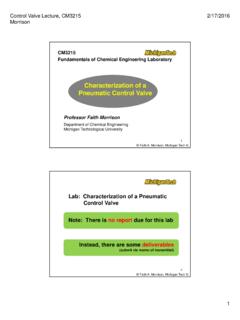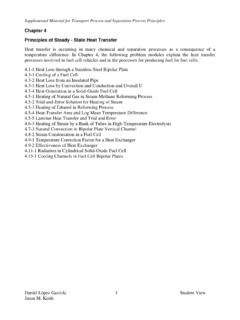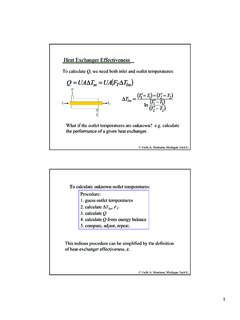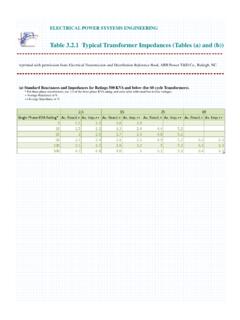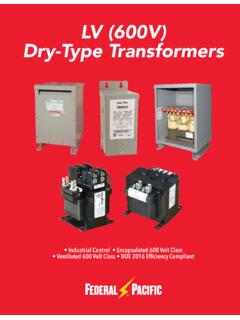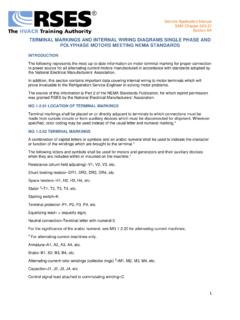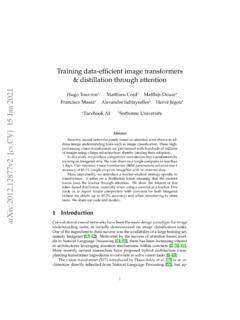Transcription of Chapter 5
1 Chapter 5 TRANSFORMERSO bjective Understand the transformer nameplate Describe the basic construction features of a transformer. Explain the relationship between voltage, current, impedance, and power in a transformer. Define transformer exciting current. Develop transformer equivalent circuits from open-circuit and short-circuit test data. Analyze transformer operation. Calculate transformer voltage regulation and efficiency. Use K-factor-rated transformer to solve nonlinear load problems. Explain the four standard three-phase transformer configurations2 IntroductionA transformeris an electricaldevice that transfers energy from one circuit to another purely by magnetic coupling.
2 Relative motion of the parts of the transformer is not required for transfer of energy. Transformers are often used to convert between high and low voltagesand to change alone cannotdo the following:-Convert DC to AC or vice versa -Change the voltage or current of DC -Change the AC supply , transformers are componentsof the systems that perform all Nameplate DataTransformer nameplates contain information about the size of the transformer in terms of how much apparent power (rated in kVA) it is designated to deliver to the load on a continuous basis as well primary and secondary voltages and.
3 75 kVA, 720-240*120V U-W primary winding is rated U volts and secondary winding is rated V voltsU/W indicates that two voltages are from the same winding and that both voltages are availableU*V two part winding that can be connected in series or parallel to give higher voltage but only one voltage is available at a Y/W the Y indicates a 3-phase winding connected in a WYE principlesThe transformer may be considered as a simple two-wheel 'gearbox' for electrical voltage and current. The primary windingis analogous to the input shaft The secondary windingis analogous to the output shaft.
4 In this comparison, current is equivalent to shaft speedand voltage to shaft torque. In a gearbox, mechanical power (speed multiplied by torque) is constant (neglecting losses) and is equivalent to electrical power (voltage multiplied by current) which is also idealized step-down transformer showing resultant flux in the core 5 The gear ratio is equivalent to the transformer step-up or step-down ratio. A step-up transformeracts analogously to a reduction gear (in which mechanical power is transferred from a small, rapidly rotating gear to a large, slowly rotating gear): it trades current (speed) for voltage (torque), by transferring power from a primary coil to a secondary coil having more turns.
5 A step-down transformeracts analogously to a multiplier gear (in which mechanical power is transferred from a large gear to a small gear): it trades voltage (torque) for current (speed), by transferring power from a primary coil to a secondary coil having fewer idealized step-down transformer showing resultant flux in the core 61/1 TransformerWhen the primary winding and the secondary winding have the same amount of turns there is no change voltage, the ratio is 1/1 unity. Step-Down TransformerIf there are fewer turns in the secondary winding than in the primary winding, the secondary voltage will be lower than the primary.
6 Step Up TransformersIf there are fewer turns in the primary winding than in the secondary winding, the secondary voltage will be higher than the secondary simple transformer consists of two electrical conductors called the primary windingand the secondary winding. If a time-varying voltage is applied to the primary winding of turns, a current will flow in it producing a magnetomotive force(MMF). The primary MMF produces a varying magnetic fluxin the accordance with Faraday's Law, the voltage induced across the primary winding is proportional tothe rate of change of flux :Similarly, the voltage induced across the secondary winding is:8 With perfect flux coupling, the flux in the secondary winding will be equal to that in the primary winding, and so we can equate and.
7 Hence, in an ideal transformer, the ratio of the primary and secondary voltages is equal to the ratio of the number of turns in their windings, or alternatively, the voltage per turn is the same for both windings. This leads to the most common use of the transformer: to convert electrical energy at one voltage to energy at a different voltage by means of windings with different numbers of Universal EMF equationFaraday s law tells:If we apply sinusoidal voltage to the transformer:Flux is given by:This equation demonstrates a definite relation between the voltage in a coil, the flux density, and the size of the core.
8 The designer must make trade-offs among the variables when design a and CurrentFor the ideal transformer, all the flux is confined to theiron core and thus links the primary and ratioFor step-down transformer, the primary side has moreturns than secondary, therefore a >1;For step-up transformer, the primary side has fewerturns than secondary, therefore a <1;ExampleBecause the losses are zero in the ideal transformer, the apparent power in and out of the transformer must be the same: Ratio of the currents is inverse of the voltage ratio or the inverse of the turns makes sense.
9 If we raise the voltage level to a load with a step-up transformer , then the secondary current drawn by the load would have to be less than the primary current, science the apparent power is constant 11 ExampleImpedanceDue to the fact that the transformer changes the voltage and current levels in opposite directions, it also changes the apparent impedance as seen from the two sides of the s law applied at the load:Recollect: The Reflected (referred) impedance(the impedance looking intothe primary side of the transformer)
10 When we move an impedance from the secondary to the primary side of the transformerwe multiply by the turns ratio moving the impedance from the primary to the secondary, we divide it by the turns ratio process is called referring the impedance to the side we move it, and allows us to use transformers to match impedances between a source and a load12 ExampleExciting CurrentIn real life we deal with real transformers which require current in the primary winding to establish the flux in the core. The current that establishes the flux is called the exiting current.
